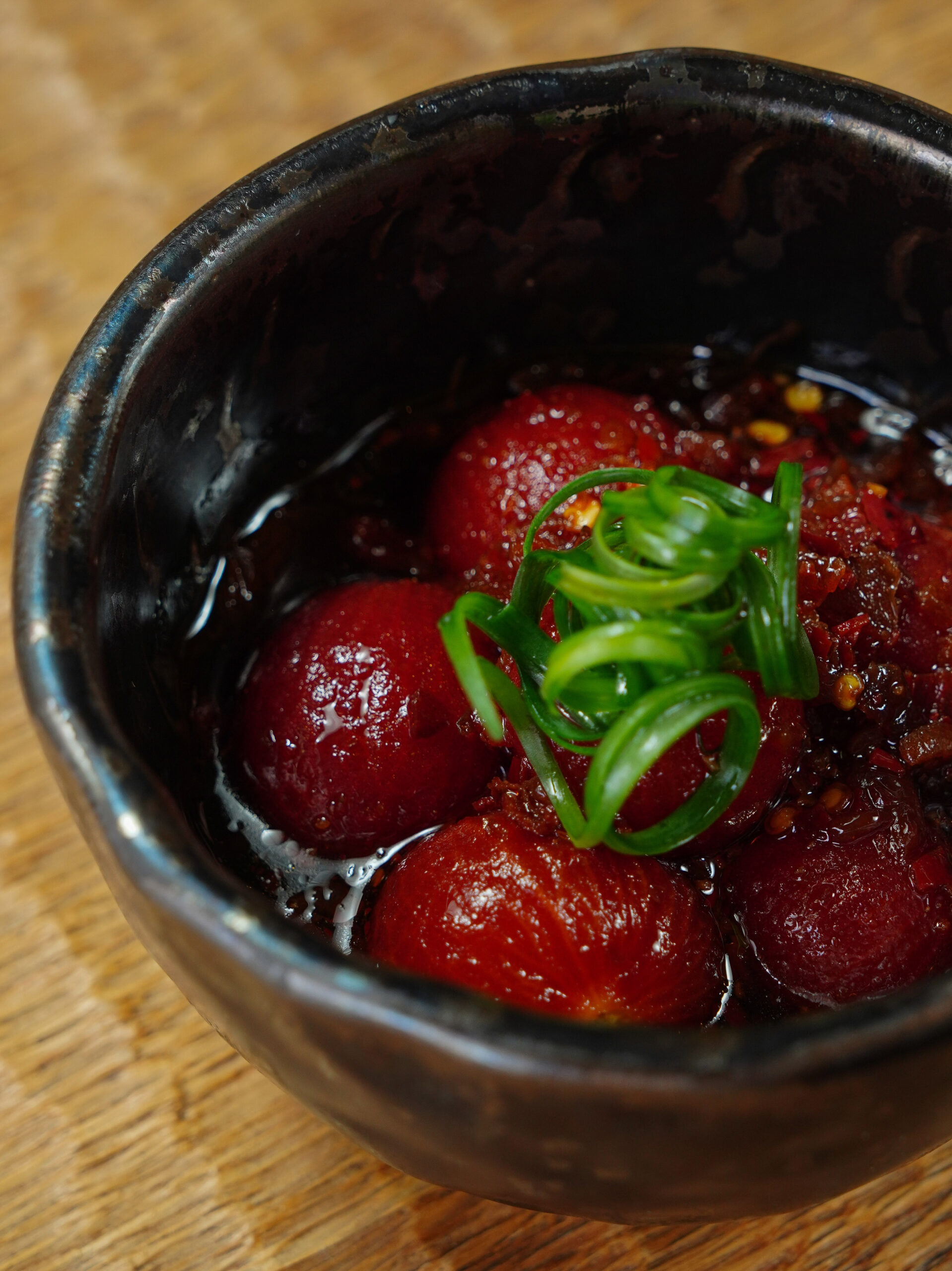Are you someone who loves spending time in the kitchen, experimenting with new recipes and flavors? If so, then you know that cooking oils play a crucial role in achieving the perfect dish. From olive oil to coconut oil, each type of oil has its own unique characteristics and uses. In this article, we will explore the world of cooking oils, delving into their different types, their respective uses, and most importantly, their smoke points. Whether you’re a seasoned chef or a beginner in the kitchen, this guide will provide you with valuable insights to help you master the art of cooking with oils. So grab your apron and get ready to take your culinary skills to new heights!

1. Introduction to Cooking Oils
1.1 What are cooking oils?
Cooking oils are essential ingredients in the culinary world. They are derived from various sources such as plants, seeds, nuts, and animal fats. These oils are commonly used in cooking and baking to enhance flavors, add moisture, and achieve desired textures in a wide range of dishes.
1.2 Importance of cooking oils in culinary
Cooking oils play a crucial role in the culinary arts. They act as a medium for heat transfer, allowing food to cook evenly and prevent sticking. Beyond that, cooking oils also serve as flavor enhancers, adding depth and richness to dishes. Additionally, oils are used to preserve and marinate foods, providing both practical and gastronomic benefits.
1.3 Health considerations of cooking oils
When considering cooking oils, it is important to be mindful of their impact on health. Some oils are rich in beneficial nutrients, while others may contain unhealthy saturated or trans fats. It is essential to choose cooking oils that contribute to a balanced and nutritious diet. Understanding the different types of cooking oils and their properties can help you make informed choices for your health and wellbeing.
2. Types of Cooking Oils
2.1 Vegetable Oils
Vegetable oils are among the most commonly used cooking oils. These oils are usually extracted from various plant sources such as soybeans, corn, canola, sunflower, and olive. Vegetable oils have neutral flavors, making them versatile for a wide range of cooking applications. They are also known for their high smoke points, making them suitable for high-heat cooking methods like frying and sautéing.
2.2 Seed and Nut Oils
Seed and nut oils are derived from the seeds and nuts of certain plants. Examples of seed and nut oils include sesame oil, peanut oil, almond oil, and walnut oil. These oils have distinct flavors that can add a unique taste to dishes. While some seed and nut oils have high smoke points and are suitable for high-heat cooking, others may have lower smoke points and are better suited for low-heat applications or as finishing oils.
2.3 Animal-Based Fats
Animal-based fats, such as lard and tallow, are cooking oils that come from animal sources. While they have fallen out of favor in recent years due to health concerns, they still have their place in certain culinary traditions. Animal-based fats can impart rich flavors and exceptional textures to dishes. They are often used for frying, roasting, and baking, adding a distinct savory quality that is highly sought after.
2.4 Specialty Oils
Specialty oils refer to those that are derived from unconventional sources or undergo unique production processes. Examples of specialty oils include avocado oil, coconut oil, and truffle oil. These oils offer distinct flavors and have gained popularity for their unique properties. Avocado oil, for instance, is rich in monounsaturated fats and has a high smoke point, making it a versatile choice for various cooking techniques. Truffle oil, on the other hand, is prized for its intense aroma and is often used as a finishing oil to elevate the flavors of dishes.

3. Characteristics and Properties of Cooking Oils
3.1 Smoke Point
The smoke point of a cooking oil refers to the temperature at which it starts to break down and produce smoke. This is an important factor to consider when selecting an oil for a particular cooking method. Oils with high smoke points, like refined vegetable oils, can withstand higher temperatures without burning or releasing harmful compounds. On the other hand, oils with lower smoke points, such as extra virgin olive oil or butter, are better suited for low-heat cooking or as finishing oils.
3.2 Flavor Profile
Each cooking oil has its own distinctive flavor profile. Some oils, like extra virgin olive oil, have robust and fruity flavors, while others, like peanut oil, have a more nutty and rich taste. The flavor of the oil can significantly impact the overall taste of a dish, so it is important to choose an oil that complements the flavors of the other ingredients.
3.3 Nutritional Content
The nutritional content of cooking oils can vary widely. Some oils are rich in monounsaturated or polyunsaturated fats, which are considered healthier options. Others may contain higher levels of saturated or trans fats, which can have negative effects on cardiovascular health when consumed in excess. It is important to choose oils that fit within your dietary needs and goals.
3.4 Shelf Life
Another aspect to consider when selecting cooking oils is their shelf life. Oils with longer shelf lives can be stored for extended periods without going rancid. Refined oils, for example, have longer shelf lives compared to unrefined or cold-pressed oils. Proper storage and handling can also help prolong the shelf life of oils and maintain their quality.
4. Uses of Cooking Oils
4.1 Sautéing and Stir-Frying
Cooking oils are commonly used for sautéing and stir-frying, where high heat and quick cooking times are involved. Oils with high smoke points, such as vegetable oils or peanut oil, are best suited for these techniques. The oil helps to evenly distribute heat and prevent sticking, resulting in beautifully cooked vegetables, meats, and other ingredients.
4.2 Pan-Frying and Deep-Frying
For pan-frying and deep-frying, oils with high smoke points and neutral flavors are ideal. These oils can withstand the high temperatures required for frying without breaking down or imparting unwanted flavors to the food. Examples of suitable oils for frying include canola oil, peanut oil, and sunflower oil.
4.3 Baking and Roasting
When it comes to baking and roasting, certain oils can be used to achieve desired textures and flavors. Some baking recipes call for oils like vegetable oil or melted butter to add moisture and create tender baked goods. For roasting, oils like olive oil or avocado oil can be used to coat vegetables or meat before cooking, resulting in crispy and flavorful dishes.
4.4 Salad Dressings and Marinades
Cooking oils also play a crucial role in salad dressings and marinades. Their flavors and textures can be combined with various ingredients to create delicious dressings or to tenderize and infuse flavors into meats. Extra virgin olive oil, for example, is highly prized for its flavor and can be used as a base for many homemade dressings and marinades.

5. Smoke Points of Common Cooking Oils
5.1 High Smoke Point Oils
High smoke point oils are suitable for high-heat cooking methods such as frying, sautéing, or stir-frying. Examples of oils with high smoke points include refined vegetable oils, peanut oil, and avocado oil. These oils can tolerate temperatures above 400°F (204°C).
5.2 Medium-High Smoke Point Oils
Medium-high smoke point oils are versatile and can be used for a range of cooking techniques, including baking and roasting. Examples of medium-high smoke point oils are canola oil, sunflower oil, and grape seed oil. These oils can withstand temperatures between 350°F (177°C) and 400°F (204°C).
5.3 Medium-Low Smoke Point Oils
Medium-low smoke point oils are best suited for low-heat cooking, such as light sautéing or baking at lower temperatures. Extra virgin olive oil falls into this category, along with walnut oil and sesame oil. These oils have smoke points ranging from 325°F (163°C) to 350°F (177°C).
5.4 Low Smoke Point Oils
Low smoke point oils are not suitable for cooking at high temperatures. They are typically used as finishing oils, drizzled over dishes for added flavor. Examples of low smoke point oils include flaxseed oil, pumpkin seed oil, and walnut oil. These oils have smoke points below 325°F (163°C).
6. Best Cooking Oils for Different Cooking Techniques
6.1 Best Oils for High Heat Cooking
When it comes to high-heat cooking methods like frying or stir-frying, oils with high smoke points are ideal. Canola oil, peanut oil, and avocado oil are excellent choices for these techniques, as they can withstand high temperatures without breaking down or smoking.
6.2 Best Oils for Medium-High Heat Cooking
For medium-high heat cooking techniques like roasting or baking at moderate temperatures, oils with medium-high smoke points are recommended. Canola oil, sunflower oil, and grape seed oil work well in these applications, providing a good balance of flavor and heat tolerance.
6.3 Best Oils for Medium Heat Cooking
Medium heat cooking techniques, such as light sautéing or oven baking at lower temperatures, call for oils with medium-low smoke points. Extra virgin olive oil, walnut oil, and sesame oil can add a flavorful touch to dishes cooked at these heat levels.
6.4 Best Oils for Low Heat Cooking
Low heat cooking methods, such as simmering or gentle poaching, require oils with low smoke points. Oils like flaxseed oil, pumpkin seed oil, and walnut oil can be drizzled over finished dishes to enhance flavors, or used as a base for salad dressings and cold preparations.
6.5 Best Oils for Cold Preparation
When it comes to cold preparations like salads, marinades, or dips, oils with distinct flavors and nutritional profiles are often used. Extra virgin olive oil, avocado oil, and walnut oil are popular choices for these applications, as they can enhance the taste and nutritional value of the dish.
7. Cooking Oil Health Considerations
7.1 Saturated Fats vs. Unsaturated Fats
When considering the health implications of cooking oils, it is important to understand the difference between saturated and unsaturated fats. Saturated fats, found in animal-based fats like lard and butter, can increase cholesterol levels and have been linked to cardiovascular diseases. Unsaturated fats, on the other hand, can have positive effects on heart health when consumed in moderation.
7.2 Monounsaturated Fats
Monounsaturated fats are a type of unsaturated fat that can be found in certain oils, such as olive oil and avocado oil. These fats have been associated with improved heart health and can help lower bad cholesterol levels. Including oils rich in monounsaturated fats in your diet can be a beneficial dietary choice.
7.3 Polyunsaturated Fats
Polyunsaturated fats are another type of unsaturated fat that are present in oils like sunflower oil, corn oil, and soybean oil. These fats are known to be beneficial for heart health and can help reduce the risk of cardiovascular diseases. Incorporating oils rich in polyunsaturated fats into your cooking can be a smart dietary choice.
7.4 Trans Fats and Hydrogenated Oils
Trans fats, which are created through the process of hydrogenation, are considered to be unhealthy fats. Consumption of trans fats has been associated with an increased risk of heart disease. It is important to avoid oils that contain trans fats or hydrogenated oils when selecting cooking oils.
7.5 Omega-3 and Omega-6 Fatty Acids
Omega-3 and omega-6 fatty acids are essential fats that cannot be produced by the body and must be obtained through diet. These fats play important roles in brain function, inflammation, and heart health. Oils rich in omega-3 fatty acids include flaxseed oil and canola oil, while oils like soybean oil and sunflower oil are higher in omega-6 fatty acids.
8. Storage and Shelf Life of Cooking Oils
8.1 Proper Storage Methods
To ensure the longevity of cooking oils, proper storage methods should be employed. Oils should be stored in cool, dark places away from direct sunlight and heat sources. Exposure to light, heat, and oxygen can cause oils to oxidize and degrade more quickly. It is also important to keep oils tightly sealed to prevent air from entering and accelerating the degradation process.
8.2 Shelf Life Expectancy
The shelf life of cooking oils varies depending on their source, processing, and storage conditions. Refined oils generally have longer shelf lives compared to unrefined or cold-pressed oils. While some oils can last for several months to a year, others should be used within a shorter period. It is advisable to check the manufacturer’s recommendations for specific shelf life information.
8.3 Signs of Rancidity
Over time, cooking oils may become rancid, which can negatively affect the taste and quality of dishes. Signs of rancidity include an unpleasant odor, a bitter or sour taste, and a cloudy or thickened appearance. If you notice any of these signs, it is best to discard the oil and replace it with a fresh batch.
9. Substituting Cooking Oils in Recipes
9.1 Understanding Recipe Requirements
When substituting cooking oils in recipes, it is important to consider the specific requirements of the recipe. Some recipes may call for oils with specific flavor profiles, smoke points, or nutritional properties. Understanding the role of the oil in the recipe will help you choose an appropriate substitute that will not drastically alter the final outcome.
9.2 Suitable Substitutes for Different Oils
In many instances, cooking oils can be easily substituted with other oils without major consequences. For example, if a recipe calls for canola oil but you do not have it on hand, you can use vegetable oil or sunflower oil as a suitable replacement. However, it is important to consider the smoke point and flavor of the substitute oil to ensure it will work well in the recipe.
10. Conclusion
10.1 Summary of Cooking Oils Covered
In this comprehensive guide, we have explored the world of cooking oils, including their types, uses, and properties. From vegetable oils to specialty oils, each oil offers unique flavors and characteristics that can greatly enhance your culinary creations. We have also discussed the importance of smoke points, health considerations, and proper storage methods for cooking oils.
10.2 Final Tips for Choosing and Using Cooking Oils
When it comes to selecting and using cooking oils, it is essential to consider factors such as smoke point, flavor profile, nutritional content, and shelf life. Understanding these aspects will help you make informed choices and ensure that your dishes are cooked to perfection. Experimenting with different oils and techniques can unlock a whole world of flavors and textures in your cooking endeavors. So go ahead, explore the vast array of cooking oils available, and elevate your culinary creations to new heights. Happy cooking!

